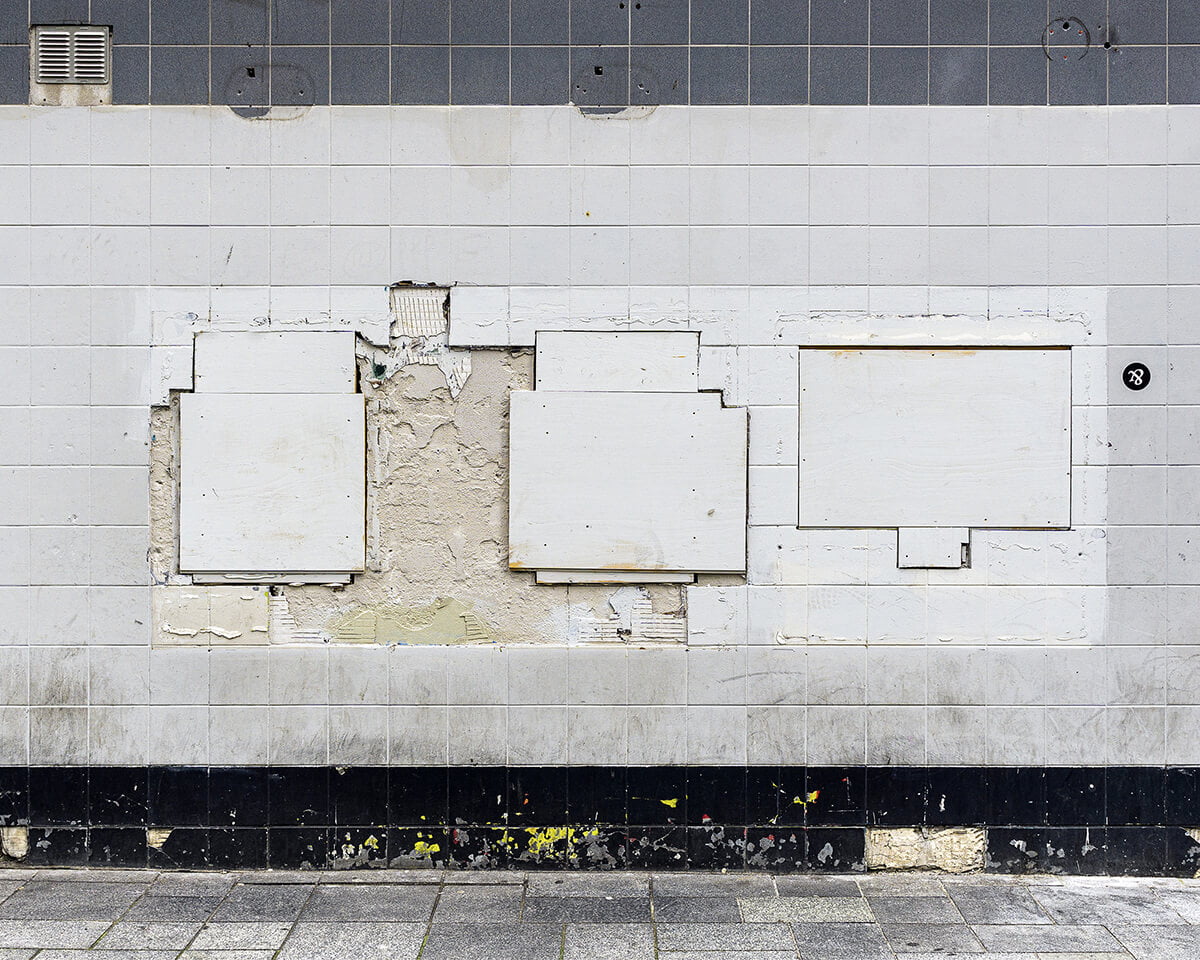EDITORS’ PICK
A Layered History
URBAN LIFE
Urban Life Editors’ Pick
Following Martin Roemers’s selection of winning images for our recent URBAN LIFE competition, this compilation of 20 images represents some of the other talented photographers whose work struck us and left a mark. Each a stunning image worthy of exposure and attention…
This month’s selection was made by Kate O’Neil, Creative Director of The Visual Loop: “When selecting for Editor’s Picks I’m always searching for those striking but undefined photographs that have potential as an unforgettable single image or series. I always enjoy the accompanying text some photographers submit with their images – it’s not a must to do so, but I feel relevant when understanding the work in full context.
With ‘Urban Life’ I was really looking for those cityscapes and scenarios that give a glimpse into authentic metropolitan dwelling, community and environment. Whether it’s street, architectural or editorial I want to be able to see and feel all elements of the scene in their truest form.”
These are intended to be a conversation starter… so feel free to join the discussion on our social networks.
BANNER IMAGE COURTESY OF MAARTEN VROMANS
www.maartenvromans.com / @maart_en_vromans
From the series Urban Transition – “With the constant development of urban areas, the function of their buildings continually changes. A school becomes an office block and, years later, an apartment complex. A factory is transformed into a concert space and then a department store. When these existing buildings are given a new purpose, more often than not, their appearance changes too: dated facades are modernised, chipped exteriors are given a fresh lick of paint, old-fashioned features on walls are replaced. But no matter how beautifully these transitions are executed time and time again, they can never entirely hide the layered history of a building and its roles: it remains perceptible and tangible forever.”
Editor’s comment: Urban development can reveal the many faces and personalities of a city, much like the rings of a tree telling its age and story. The individual buildings revamped and reused as new spaces, but the overall personality and atmosphere of a city growing and breathing much like a forest environment. I think this is a geometrically pleasing image but more importantly a significant piece of a bigger body of ongoing work documenting our ever-changing urban landscapes, and perhaps even the idea that ultimately nothing lasts forever – even our marks on the world.
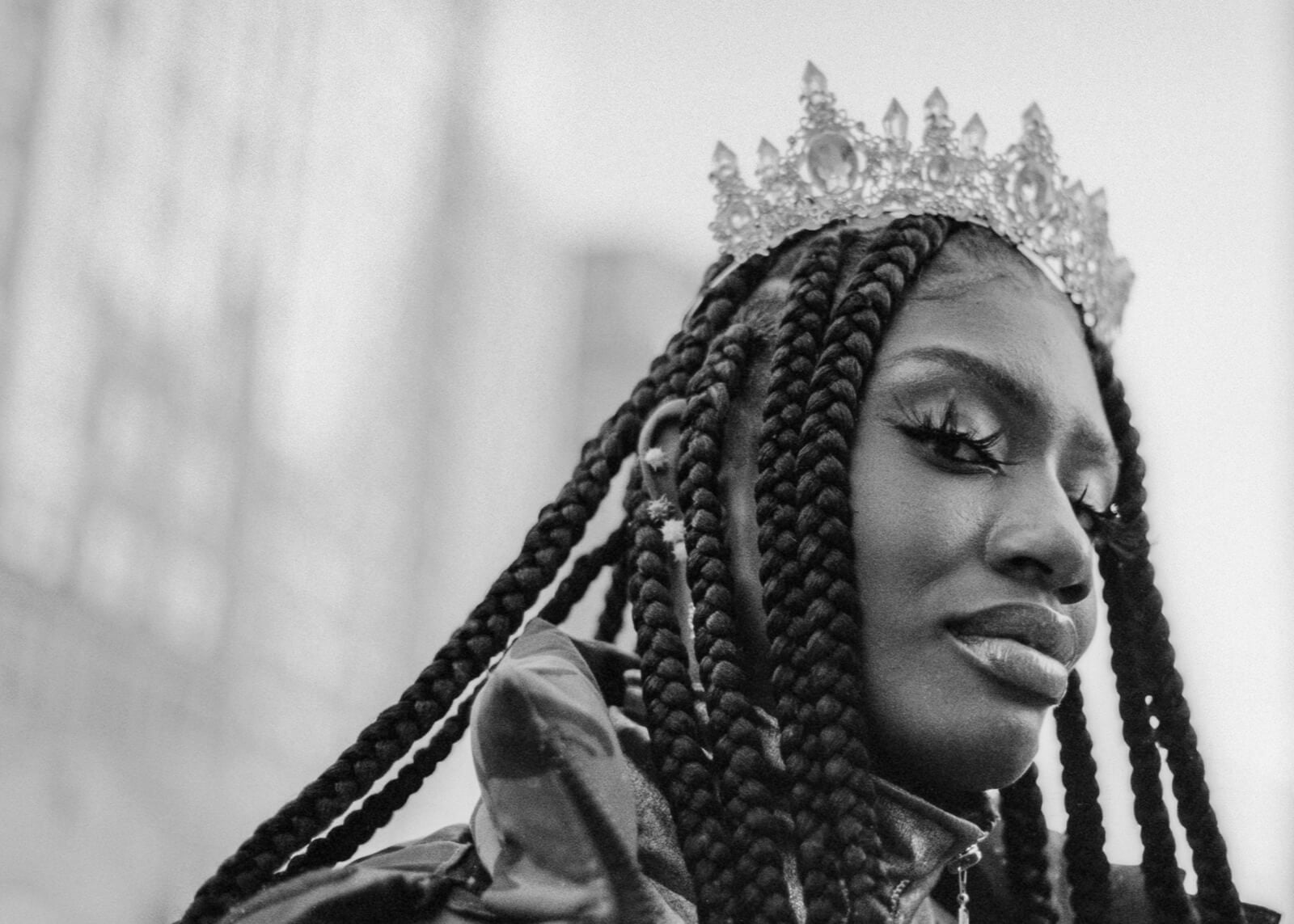
IMAGE COURTESY OF CONRAD CLIFTON
www.conradclifton.com / @conradclifton
“Xeara Tiara (2021), Kodak T-Max 400.”
Editor’s comment: A sophisticated image – simple yet compelling. The subject asserts a quiet confidence with their crown and subtle side-look, dominating the frame without doing much, like a self-made monarch happily navigating their own kingdom. The photographer’s use of black and white underlines the subject’s charm and candour, creating a beautiful, seemingly effortless style of portraiture.
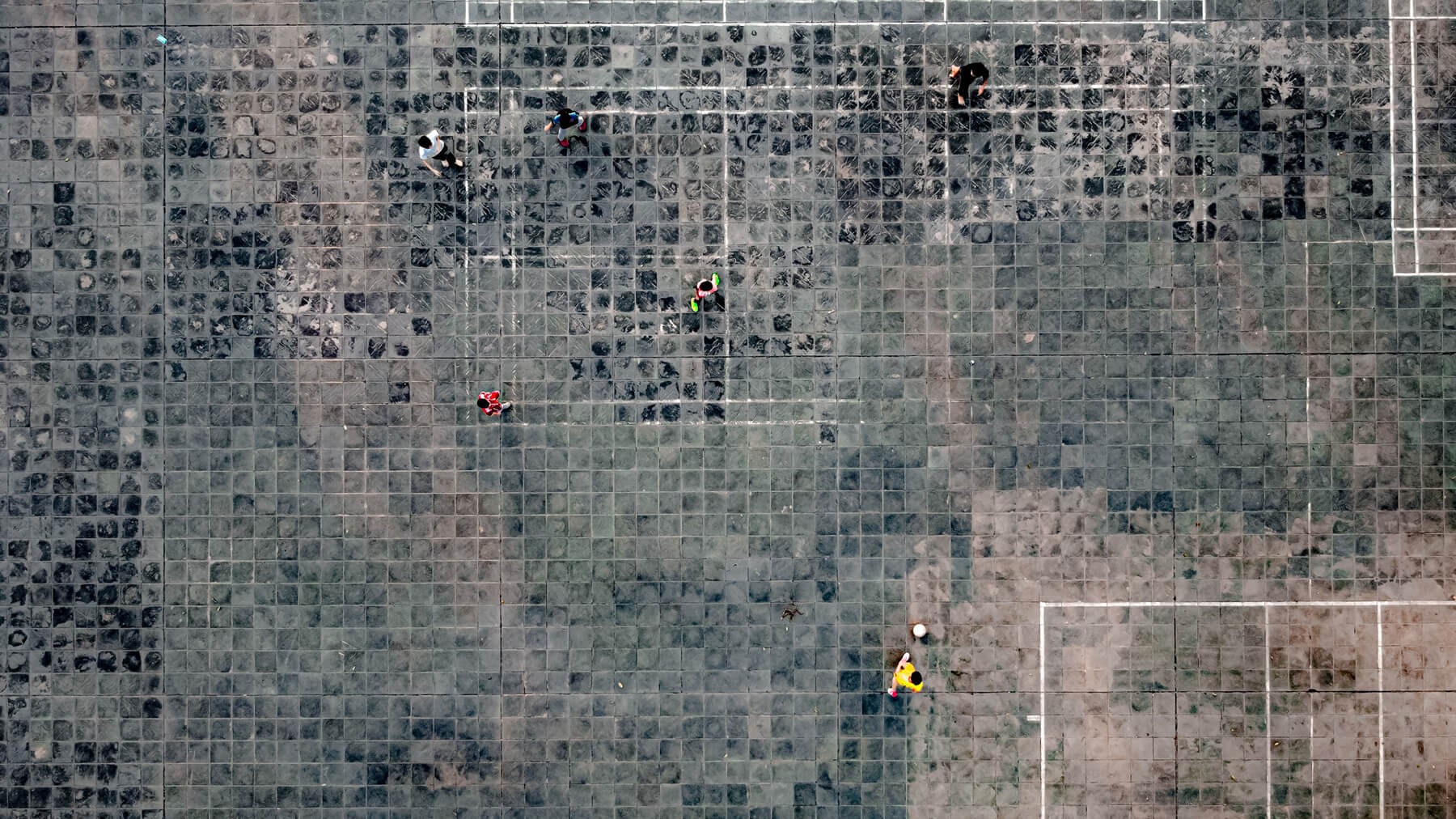
IMAGE COURTESY OF KEVIN NGUYEN
@kevinngint
Editor’s comment: Sport in an urban setting is a common scene, especially football – or soccer depending on your specific location – as it’s played in over 200 countries, making it the world’s most popular sport. This particular aesthetic and perspective gives real insight into the urban spaces in which we find potential for leisure and seek respite from the hectic atmosphere of city life. It’s a striking and pleasing image, that would make for a beautiful abstract piece were it not for the figures giving a sense of scale and colour, and elevating it into something else. I could see this working as a single art piece, the larger the better.
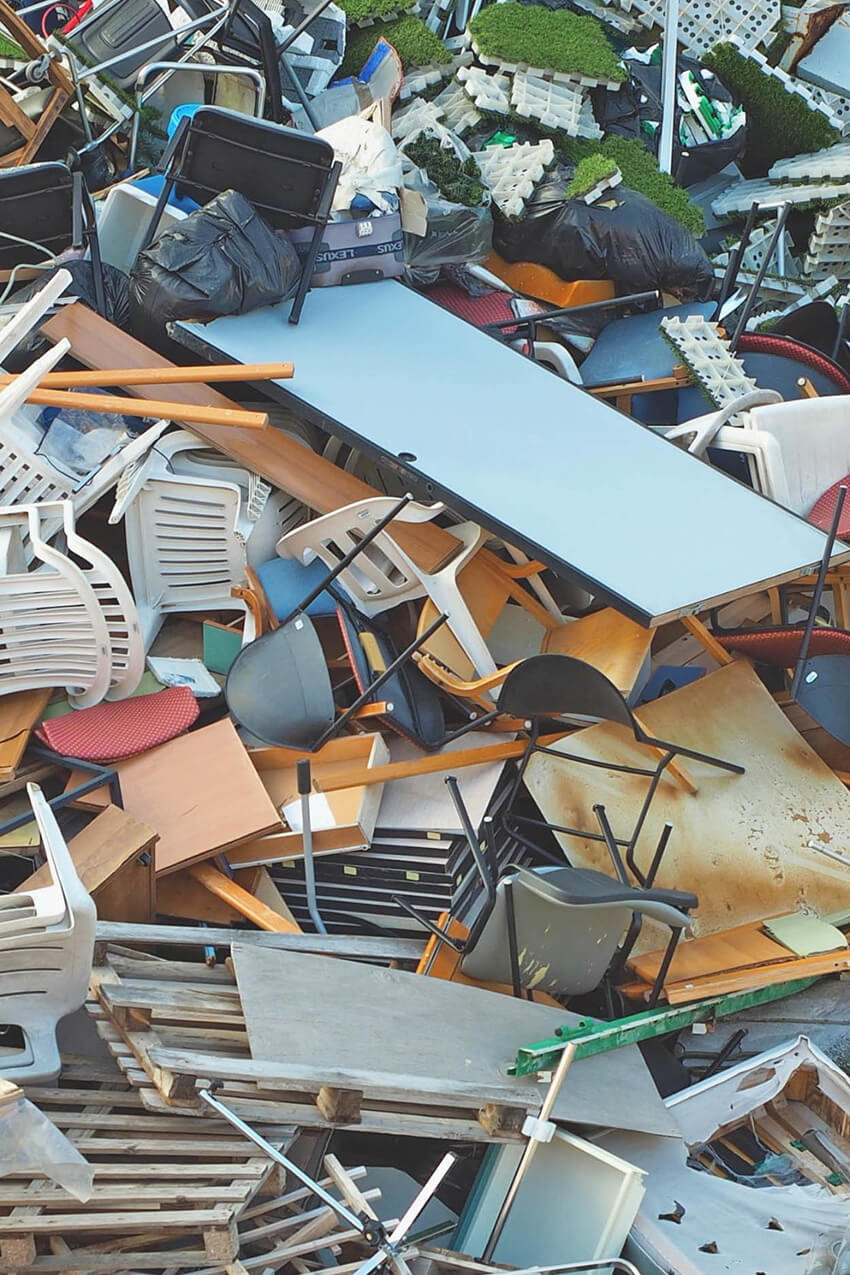
IMAGE COURTESY OF GIANLUCA ATTOLI
www.gianlucaattoli.com / @gianluca.attoli
From the series Suburban Base – “This ongoing project is based on a visual exploration of my local suburbs (Monza/Milan, Northern Italy), with the main goal of isolating and highlighting the feelings of composure, isolation, suspension and at the same time, unexpected beauty, dignity and serendipity that these types of areas can evoke. I try to keep the images as much universally accessible and relatable as possible by de-contextualising shapes and spaces and offering a representation of spaces and places ideally applicable to any, or most of suburban and industrial environments of the Western society – by this I mean for example avoiding as much as I can any local reference (names, people, emblems – unless they are universally recognizable). Reflecting about these peculiarities and this “found beauty” theme leads ideally to a broader reflection on both the recurring architectural and functional patterns that are present in towns and cities, and the cultural models and stereotypes that shape people’s perception of their urban environment.”
Editor’s comment: Beyond the obvious sign of consumption and waste in modern Western society, this image also depicts the clash of people, communities, beliefs and objects in such confined spaces. With all the benefits and opportunities available with urban living it’s easy to ignore the negative knock-on effects. This image is a well composed and cropped scene, like a kaleidoscopic sculpture of urbanism in its truest form – the photographer understands the environment they are documenting and what this image symbolises.
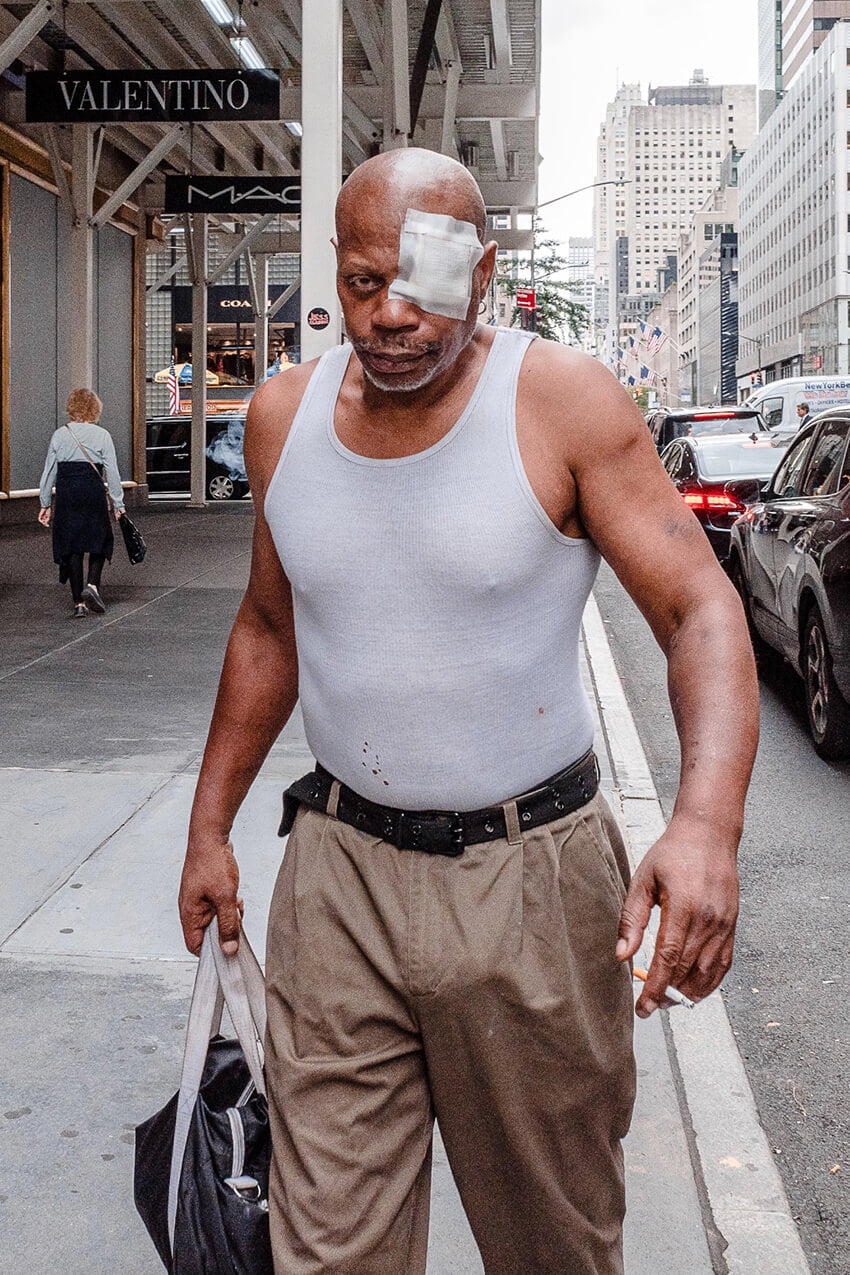
IMAGE COURTESY OF SAI MIN HTET OO
www.saiminhtetoo.com / @saiminhtetoo
Editor’s comment: People-watching, passing moments, multiple stories unfolding between strangers in seconds, these are all the components a street photographer scans their surroundings for – some from a hidden distance and others a little more obviously. The photographer here worked sharp and fast to capture this image, but with street photography there’s always an ongoing debate of art vs invasion of privacy – where are the boundaries for the subject and how they are portrayed? Are conversations happening between photographer and subject? Or would this interaction disrupt the flow of the scene? It’s an arresting image visually, and a provocative one ethically.
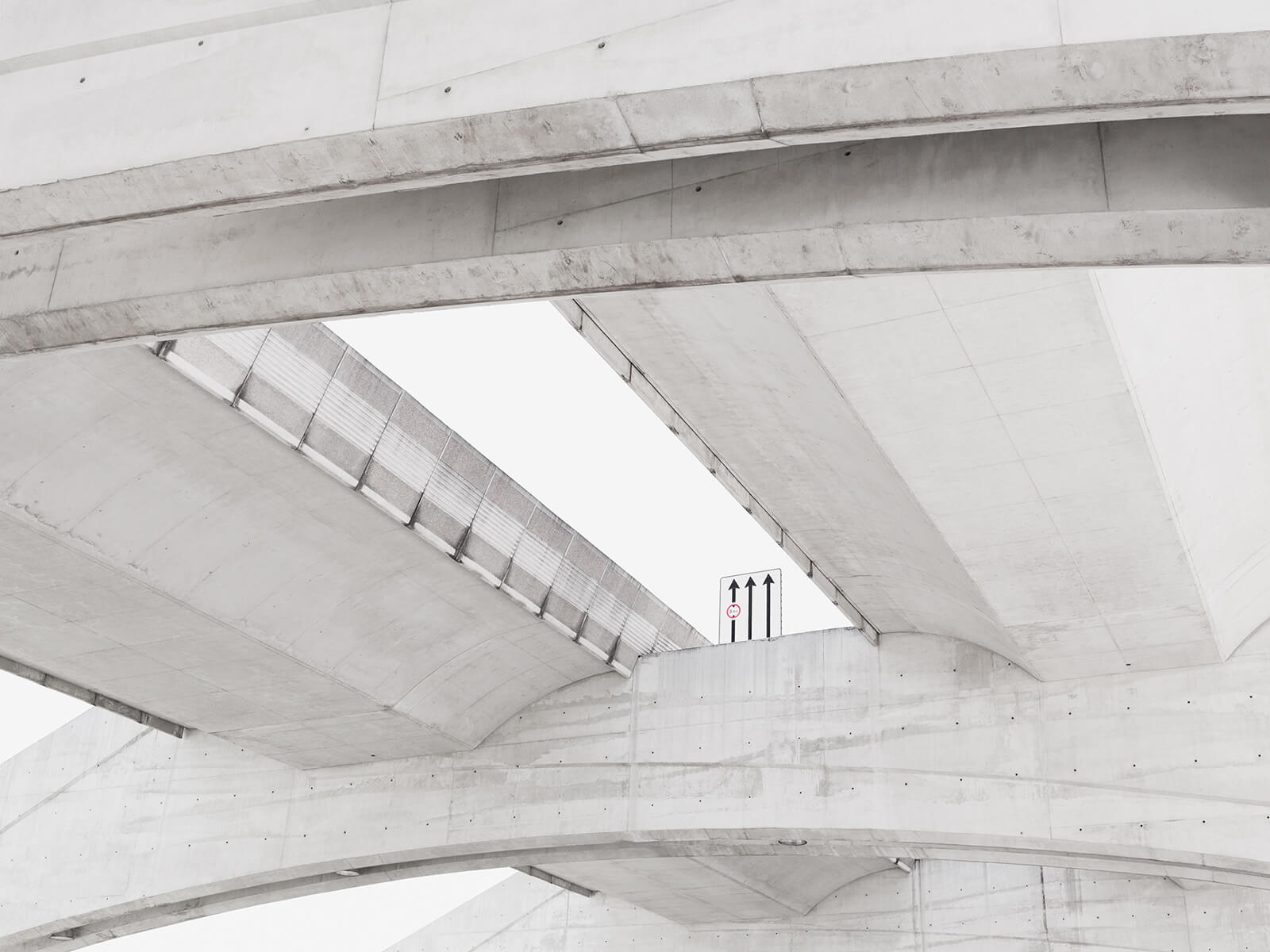
IMAGE COURTESY OF JAN PRENGEL
www.janprengel.com / @janprengel
From the series Concrete – “Shot in Porto, Portugal, this photograph explores the city’s urban landscape.”
Editor’s comment: The general colour pallet of an urban setting can sometimes be quite limited, with minimal tonal range. This is not always a negative in the eyes of a skilled photographer however, as the simplicity of it can create a variety of pleasing aesthetics. The photographer here has chosen an overfamiliar, uniformed space and chosen to highlight it in a subtle and gentle way, contrasting the greys and whites of the sky and concrete while still ensuring they complement each other as the eye is drawn through the structure. It’s a rarely seen angle of an instantly recognisable scene, that conjures ideas of both the freedom and restriction our urban environments create.
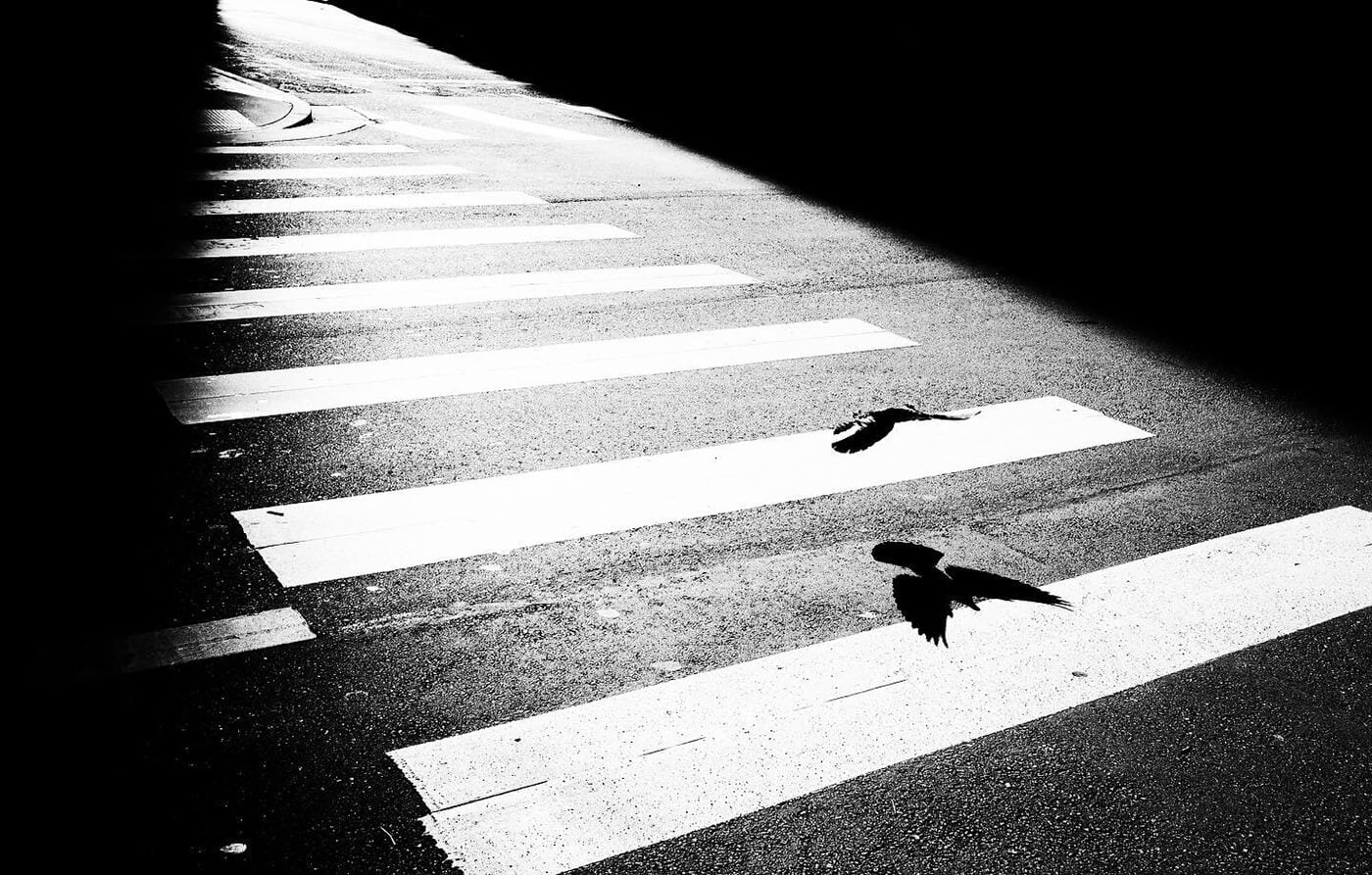
IMAGE COURTESY OF JERALD RIVERA
www.cvrrentshot.com / @cvrrent_
“Flying through the San Francisco streets.”
Editor’s comment: Urban birds live a unique existence – usually spotted loitering where people have congregated to buy, sell, eat, and discard food. This beautiful moment is a unique insight to inner-city wilderness we don’t normally witness, a graceful and peaceful scene skilfully captured by the photographer. The photographer uses leading lines quite brilliantly, along with black and white to create a timeless quality.
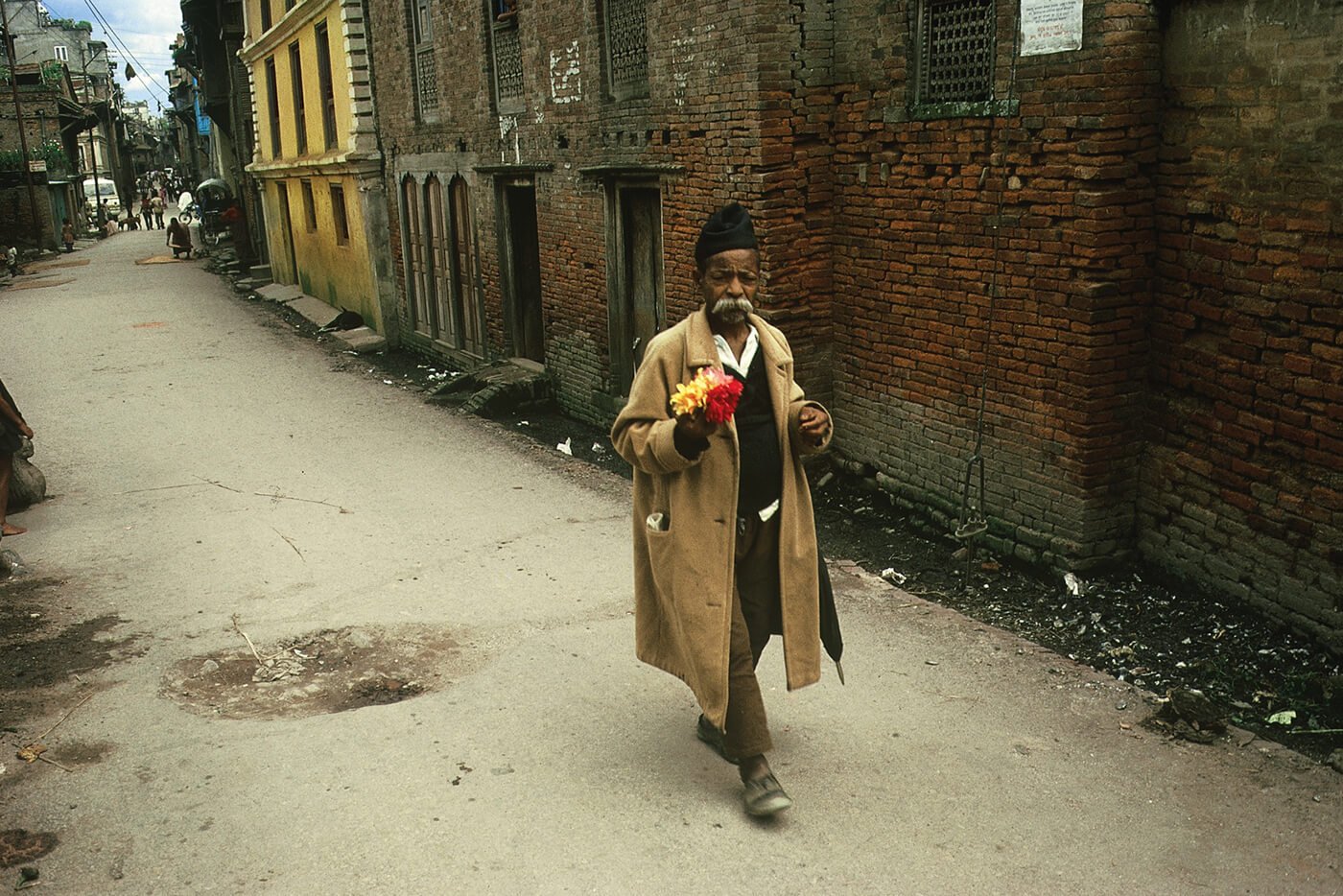
IMAGE COURTESY OF ALAIN VAN HILLE
@alainvanhille
“Kathmandu in the seventies had all the quality of an ancient roman city. The modernity hadn’t yet invaded its maze of roads, alleys and secret courtyards. A perfect place to discover another urban life far from our conception of what a city is or should be. Strange encounters, unexpected situations, that’s what I want to share with those photographs.”
Editor’s comment: We tend to associate city living with younger generations living high-octane lifestyles, and weaving vibrant narratives. We often omit the stories being lived by the older population inhabiting the same environment – their experiences, interactions and anecdotes less documented. This photographer seems to understand this, presenting a candid image depicting a character comfortable in their surroundings, someone who is embedded in the nature of this city. The flowers in their hands creates a pleasing dash of color against the dusty, sepia tones.
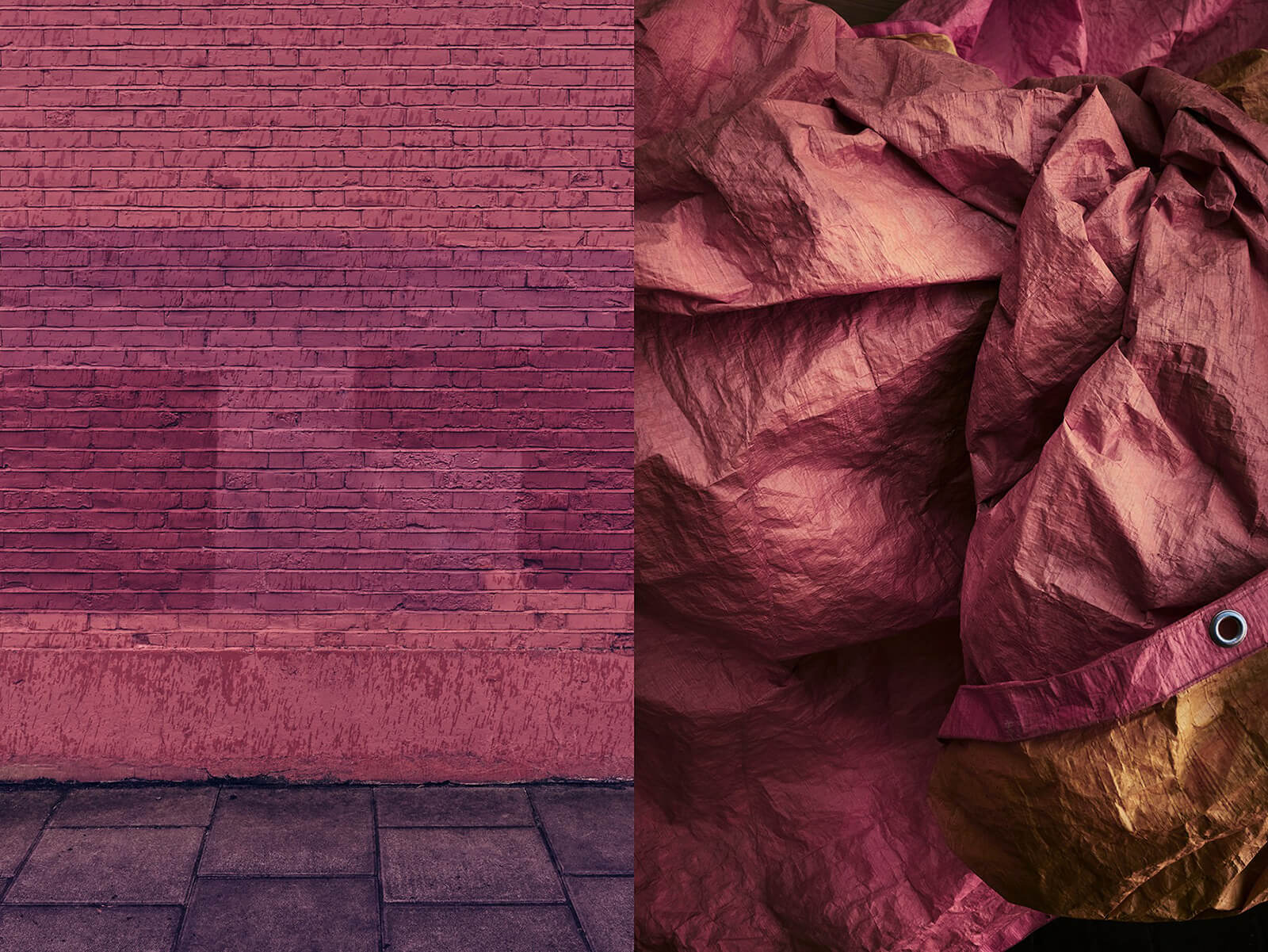
IMAGE COURTESY OF NATO WELTON
www.natowelton.com / @natowelton
“This series was shot during lockdown in london. They are my reaction to empty streets, abandoned shops and offices. Reflecting a stillness and quiet not normally felt in London. They are all diptychs to be shown as a single image.”
Editor’s comment: Textures and patterns of a city are more unique than we may realise. This photographer took an opportunity during our year of lockdown to stop and survey these elements, documenting quiet scenes and revealing a new layer to their overfamiliar surroundings. The diptych element within a single image adds a really thoughtful aspect to the work, which glows with unexpected colour.
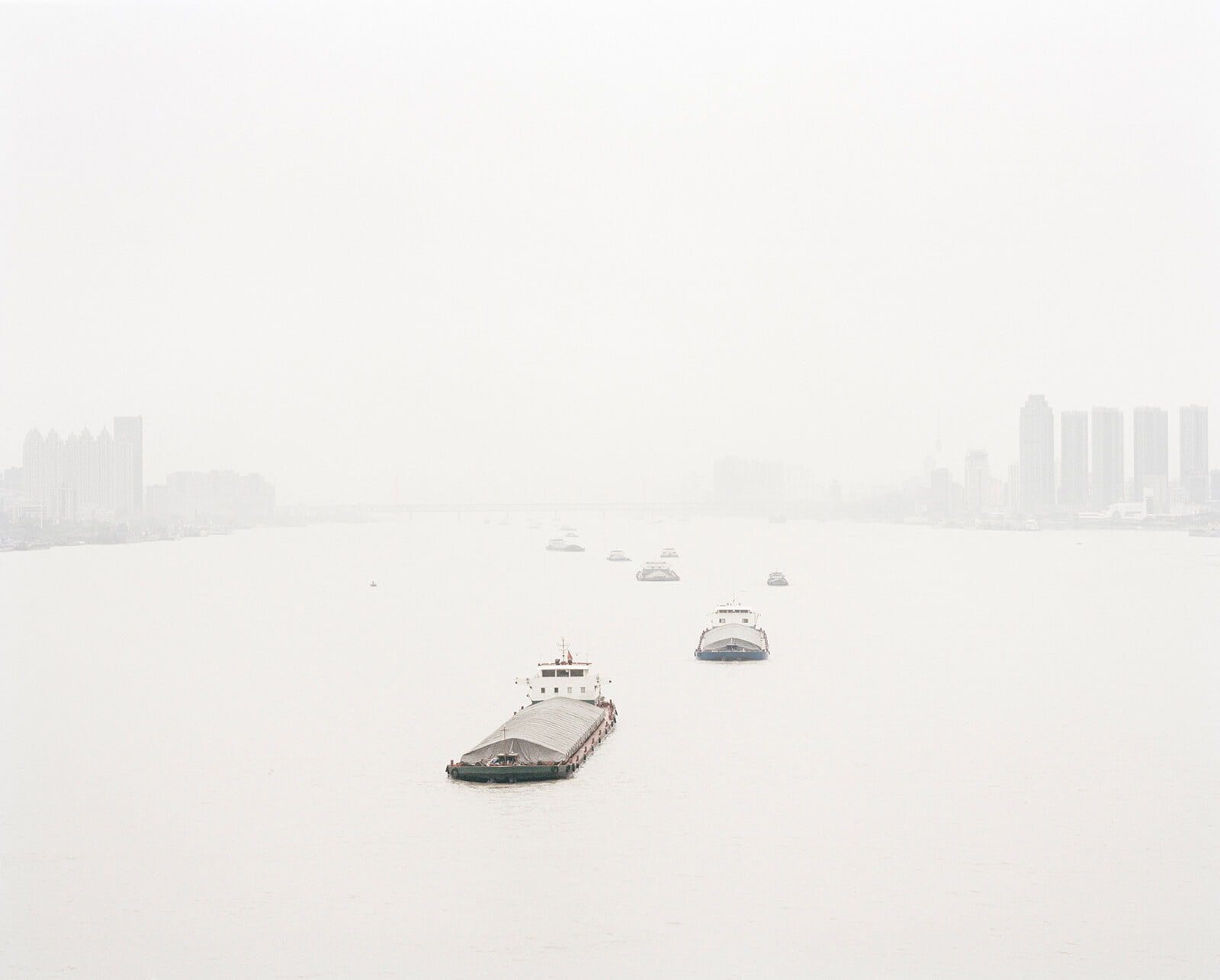
IMAGE COURTESY OF EDUARDO NAVE SILVESTRE
www.eduardonave.com / @eduardonave
From the series Wuhan, The Unfinished City – “Wuhan is the capital of Hubei province and the most populous city, with 11 million inhabitants, in central China. It is considered as the political, economic, financial, commercial, cultural and educational center in the central area of the People’s Republic of China. One of its main characteristics is that the Yangtze and Han rivers converge and cross its urban area. This particularity has shaped the urbanism of the city since its creation, originating a key role in the domestic transport of the country, it is known as “the Chicago of China”.
In the last 15 years, it has been one of the cities that urbanistically has been transforming the fastest, swallowing almost weekly the neighboring towns to the city and building more than a thousand skyscrapers per year, hence the feeling of being an unfinished and infinite city . Despite being a city with such magnitudes and capacities, the city has gone almost unnoticed by the rest of the world during the past and this century. At the beginning of 2020, the name of the city of Wuhan has become notorious for being the place where the South China Seafood Wholesale Market is located, the place of origin of the new coronavirus (2019-nCoV) that has led to an epidemic viral pneumonia worldwide.”
Editor’s comment: Our attention on Wuhan in the past year has been from a very specific perspective, but this work expands our view of this hugely successful and dynamic city – one with a population larger than that of London. The photographer describes how the converging of the Yangtze and Han has shaped the urbanism of the city, how just like most western cities it’s highly dependent on the rivers for quick access to transport, imports and exports. This image cleverly uses a faded and sparse style to almost mimic the invisibility this large city has operated under in regards to the western world. A subtle photograph with a strong narrative.
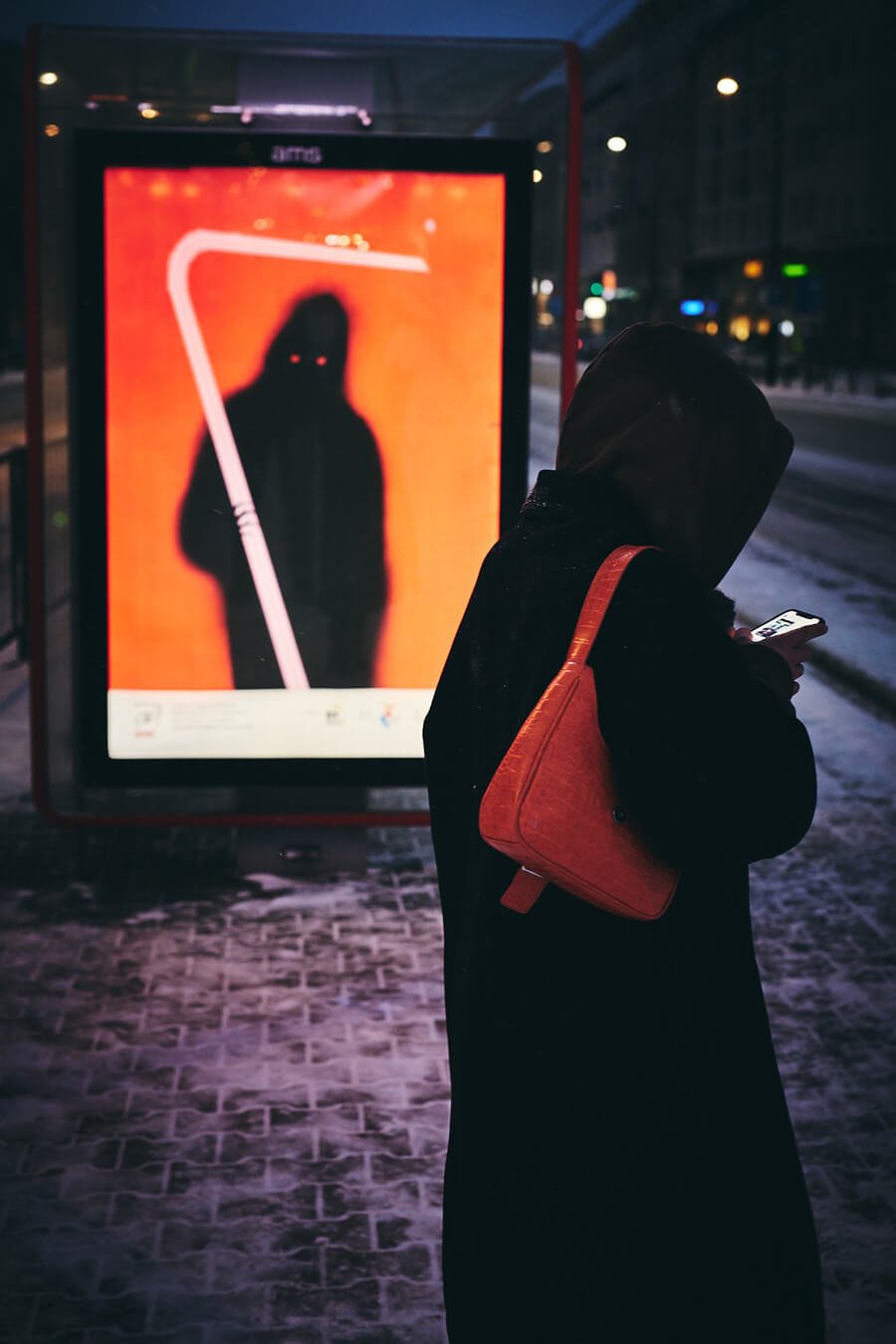
IMAGE COURTESY OF MICHAL KRZYSZKOWSKI
www.pstrikailov.com / @pstrikailov
Editor’s comment: A mix of humour and horror – this street shot in one respect has an ironic mirroring of subjects, art imitating life and visa-versa, and on a deeper level speaks about the city at night, an element of danger lurking for the solo traveller. The fact the subject seems unaware of this image being taken in the first place brings in another level of ‘the watcher’ and the unknown that could unfold. It’s a brilliantly executed and intriguing capture, that works on several levels.
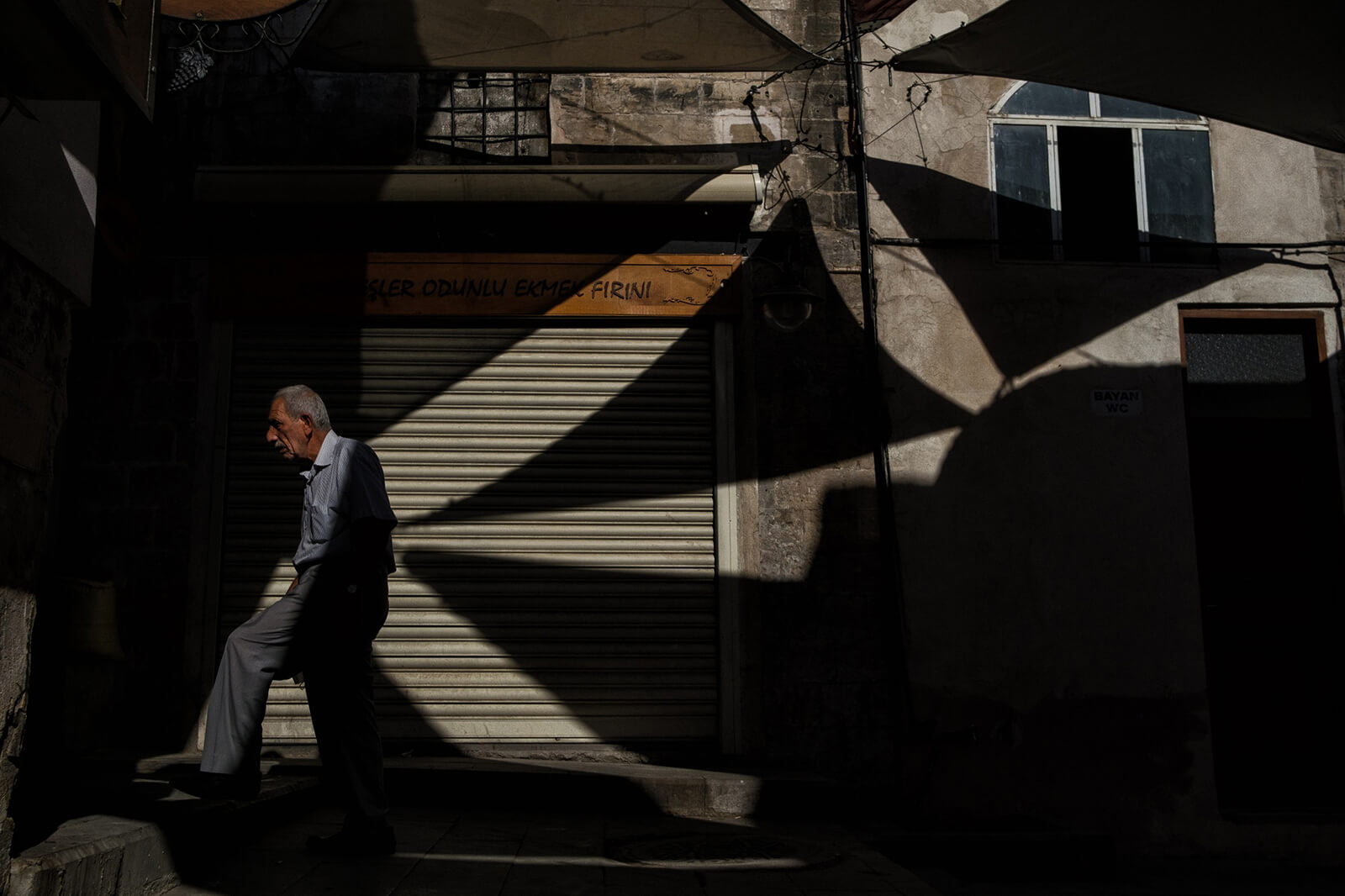
IMAGE COURTESY OF MAUDE BARDET
www.maudebardet.com / @puuuuuuuuce
Editor’s comment: There is strong sense of individual style and personality in this photographer’s work, finding enjoyment in shape, from and tone, and experimenting with the blurred lines between reality and surrealism within the frame. It’s interesting to note the relationship (or lack of) between viewer, then photographer and ultimately subject – an uncomplicated one-way system. Quite a pleasing and poetic image.
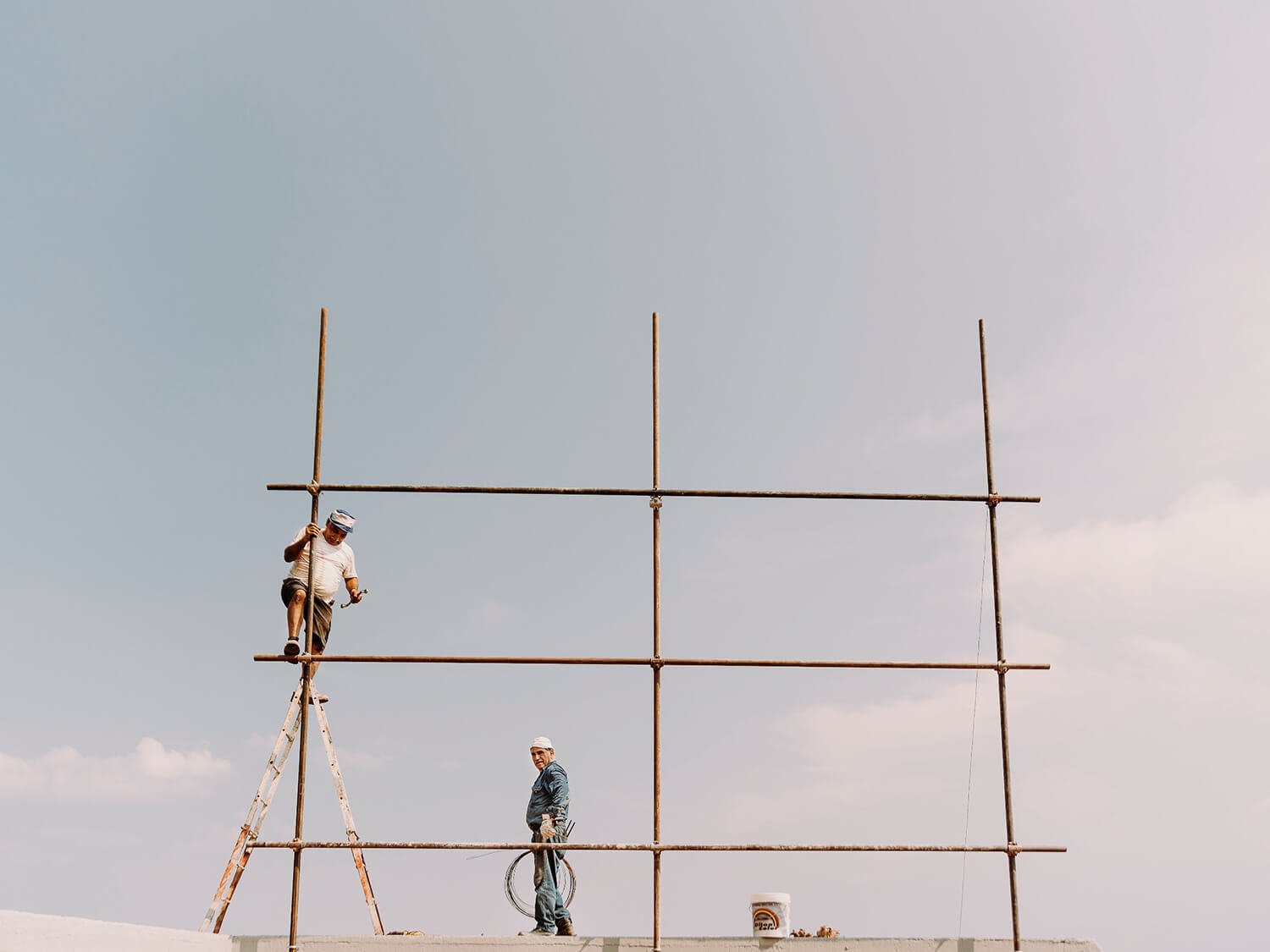
IMAGE COURTESY OF SIMONE RAELI
@volevofarelarcheologo
Editor’s comment: Construction at all stages is a familiar backdrop to our cityscapes – it is one of the largest global industries creating over 7 million jobs in the US and employing 15 million workers in Europe. Even though it creates constant noise, pollution and waste it had become a common indicator to the health of a city. I think this a very warm and cleverly composed photograph with complimenting tones – casting some charm on a mundane everyday scene, and focusing on the humble individuals, the human scale, rather than the monolithic structures they assemble.
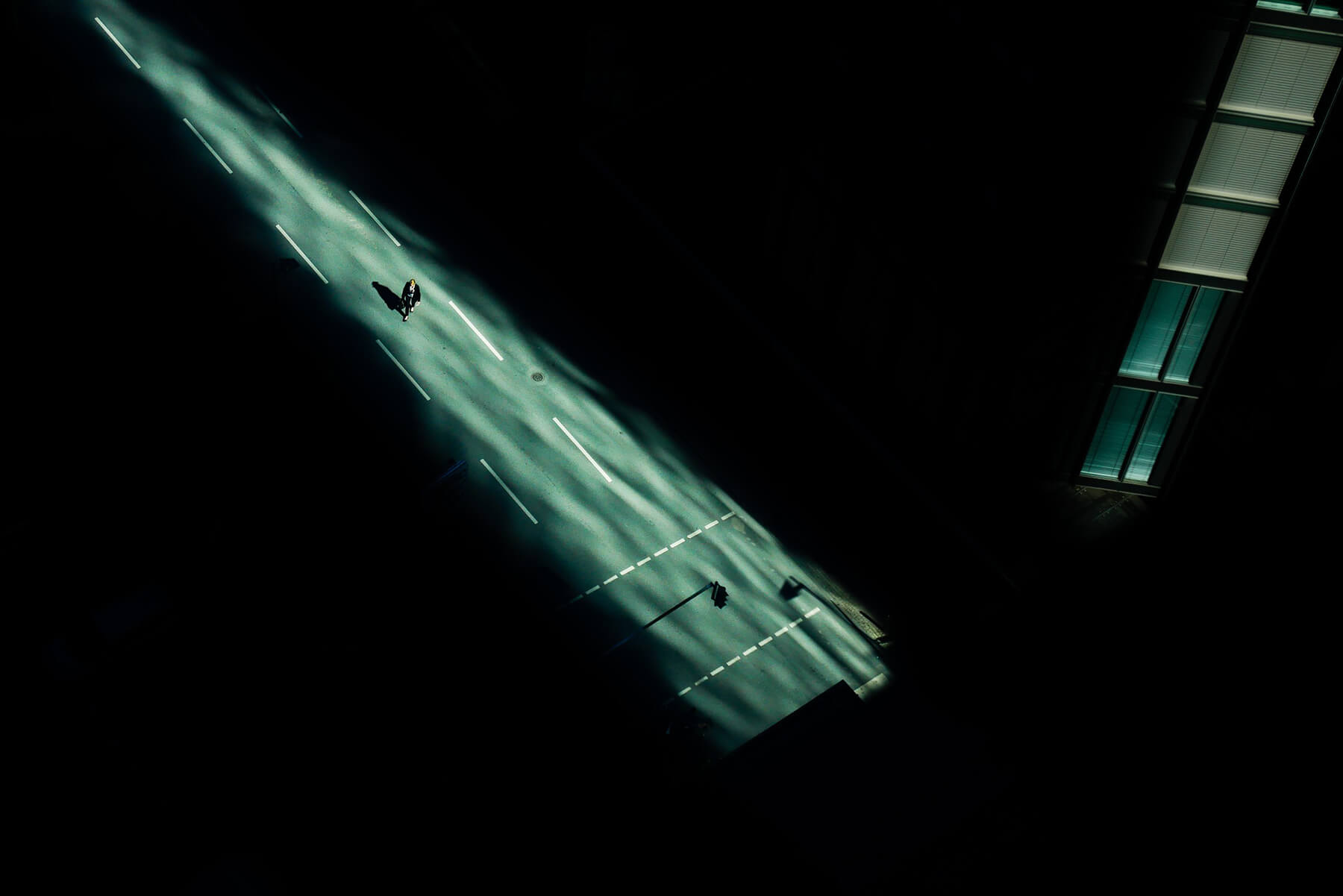
IMAGE COURTESY OF ALEXIS NAUDIN
@alenstreet
Editor’s comment: This image is a beautiful depiction of how we use urban spaces. Usually we only see things from our own point of view – literally and metaphorically – as we navigate our surroundings, so seeing this birds-eye perspective is a humble reminder of the scale some of these concrete jungles. The two shafts of sunlit space – one on the vertical, the other on the horizontal – is also very cleverly done, creating something semi-disorienting that only further emphasises that scale. I would be keen to see how this image fits into a wider narrative of the different environments we choose to inhabit.
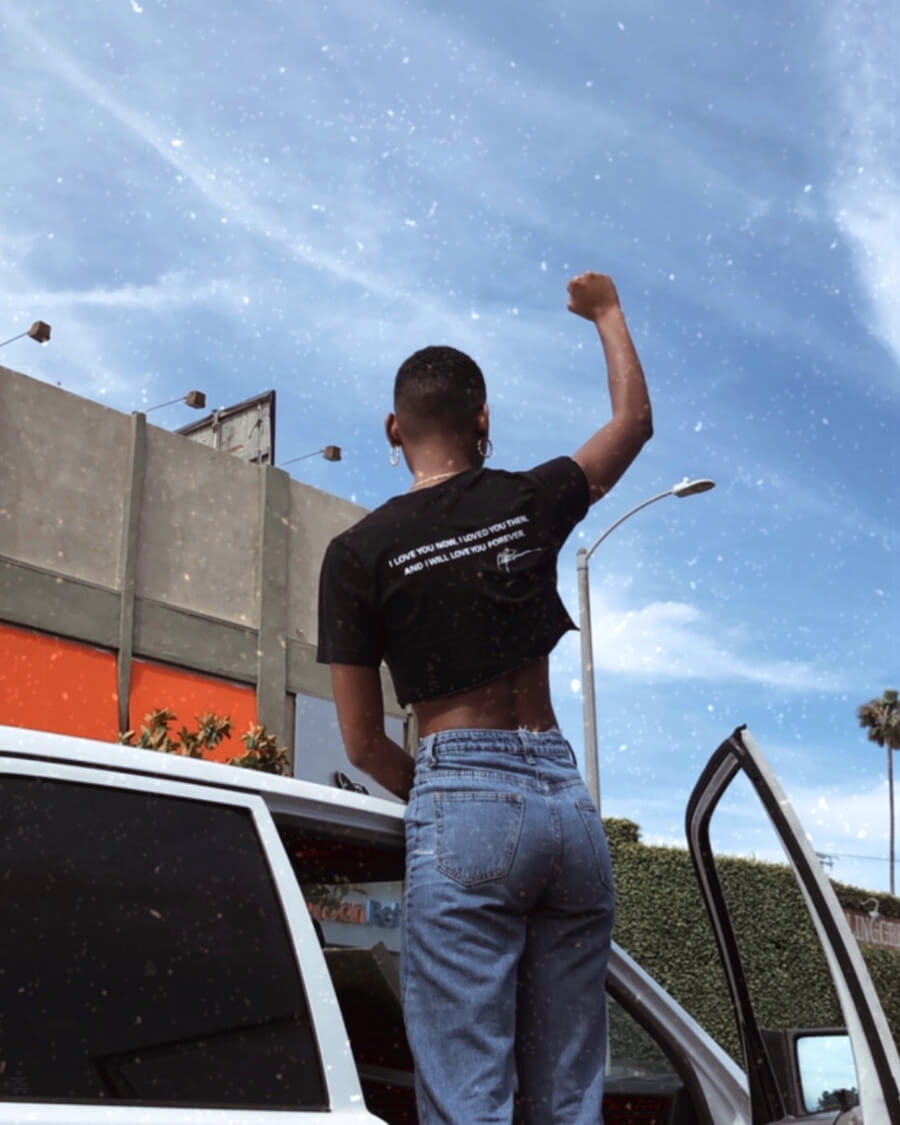
IMAGE COURTESY OF BRANDON WHITE
www.roomforerror.co / @crulecrsh
From the series Revoltage – “These images showcase the rawness and beauty captured a the 2020 George Floyd protests in Los Angeles, CA. This collection has already gained popularity as the images have been and continue to be sold across and throughout the country.”
Editor’s comment: Protest, marches and revolt are very much part of the fabric of modern society – and these scenes of crowded streets and large groups in solidarity have become even more common in recent years. This faceless portrait captured at the 2020 George Floyd protests in Los Angeles, CA – with its single figure and muted tones – reminds us of the power that can start within, the power of our own individual voice and action. But the nostalgic atmosphere created by the heavy analog grain sadly hints at the idea that even now, decades into our history of race inequality, there is still much to protest.
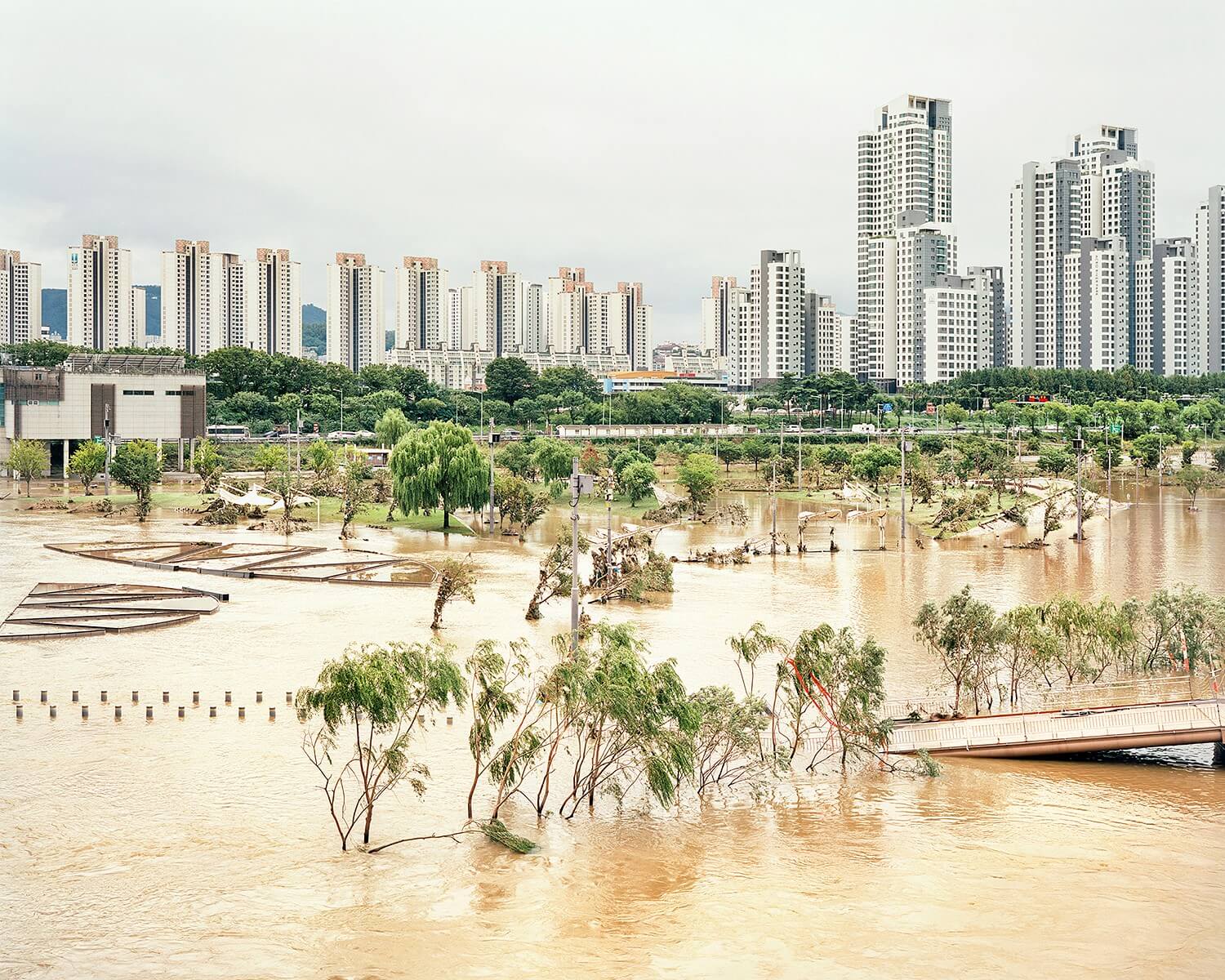
IMAGE COURTESY OF SEUNGGU KIM
www.seunggukim.com / @k.seunggu
From the series Riverside – “The Han River is a typical place for relaxation and escape from city life, but on rainy days during the summer season this can all change. It reminds the photographer of scenes from natural disaster movies when the Han River rises and submerges the nearby parks during this season. It is an uncomfortable feeling, when this place which we are so familiar with, changes from a place of relaxation and safety to one of dangers and uncertainties. But even with the imminent dangers of flooded walking tracks and submerged gardens, you can still see people enjoying the riverside, all the while ignoring the evacuation and warning notices. We can see an elder who is throwing his fishing rod into the river even though the water level has risen to his ankle and also a couple enjoying their daytime nap in a tent near the flooded area. These are astonishing yet dangerous pictures that one could only expect to exist on a news channel. These pictures represent the risks a modern civilian’s must take to enjoy their leisure life, release their stress and find solace in the “limited time and space” offered to them. He wanted to show this unique section of modern civilian’s life that he has observed from their dejected leisure life and has been generated from the borderline between their familiar spaces and circumstances.”
Editor’s comment: “It is an uncomfortable feeling, when this place which we are so familiar with, changes from a place of relaxation and safety to one of dangers and uncertainties”. The soft tones and colour pallet lulls you into a false sense of familiarity until you look closer and realise this scene is not how it’s supposed to be. A scene from a dystopian future? It’s unfortunately a more realistic and familiar scenario than we are comfortable with, and the role of the photographer will be key in documenting these changes as we navigate the Climate Crisis.
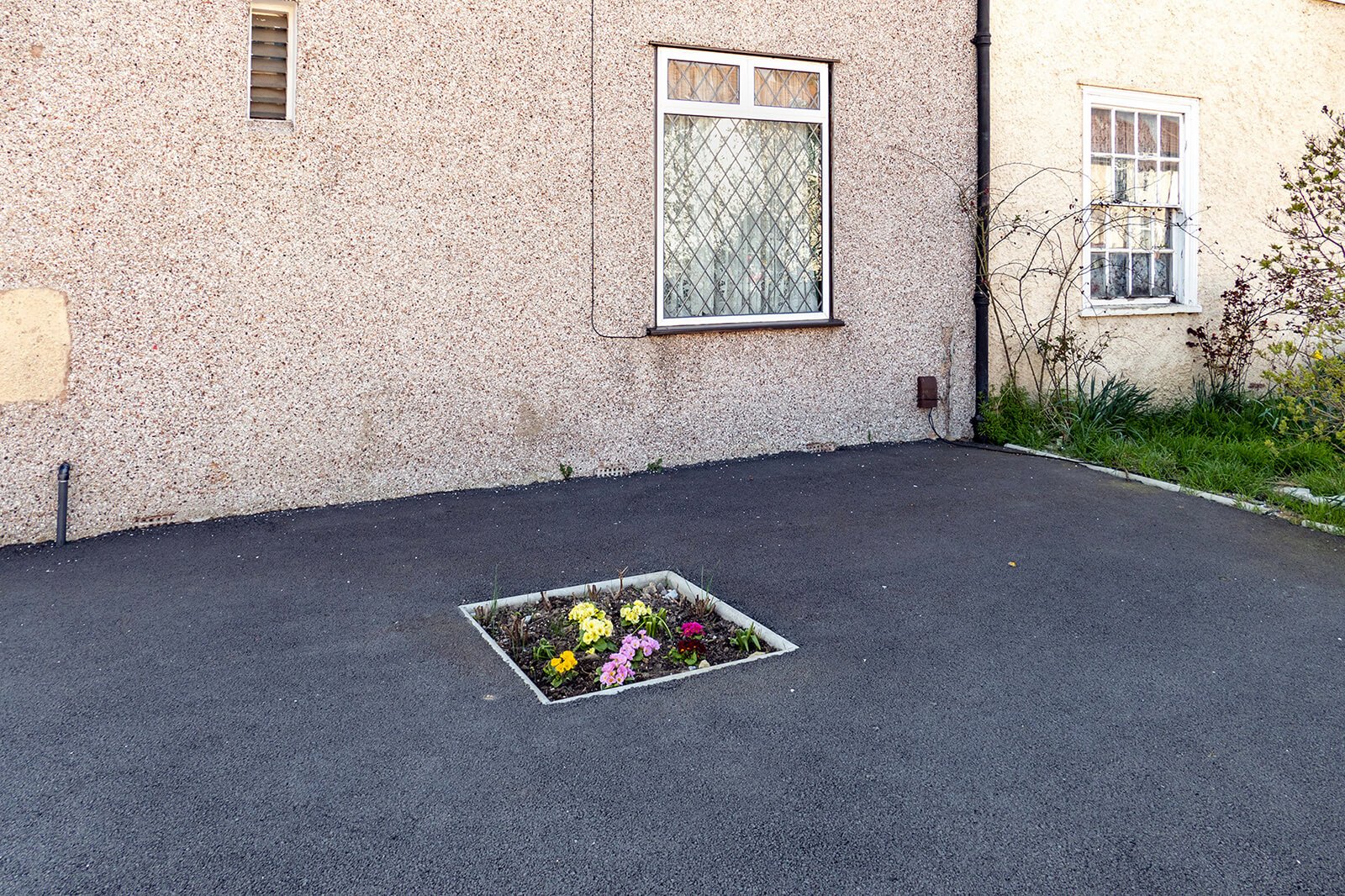
IMAGE COURTESY OF COLIN PAGE
“Urban Life to me is a massive living laboratory made up of glass, concrete and steel. Structured residential facilities and mass communication networks are squeezed together in relatively concentrated areas. Green spaces and nature are in limited supply and even a glimpse of blue sky and clouds is a rarity.”
Editor’s comment: It’s not a surprise that green spaces and nature are in limited supply within cities and urban settings. It’s interesting to see how people make use of their surroundings and boundaries. This is a really enjoyable image, it feels like a true insight into the world of city dwellers and the creativity they exercise to display their individual personalities, no matter how small such interventions might be.
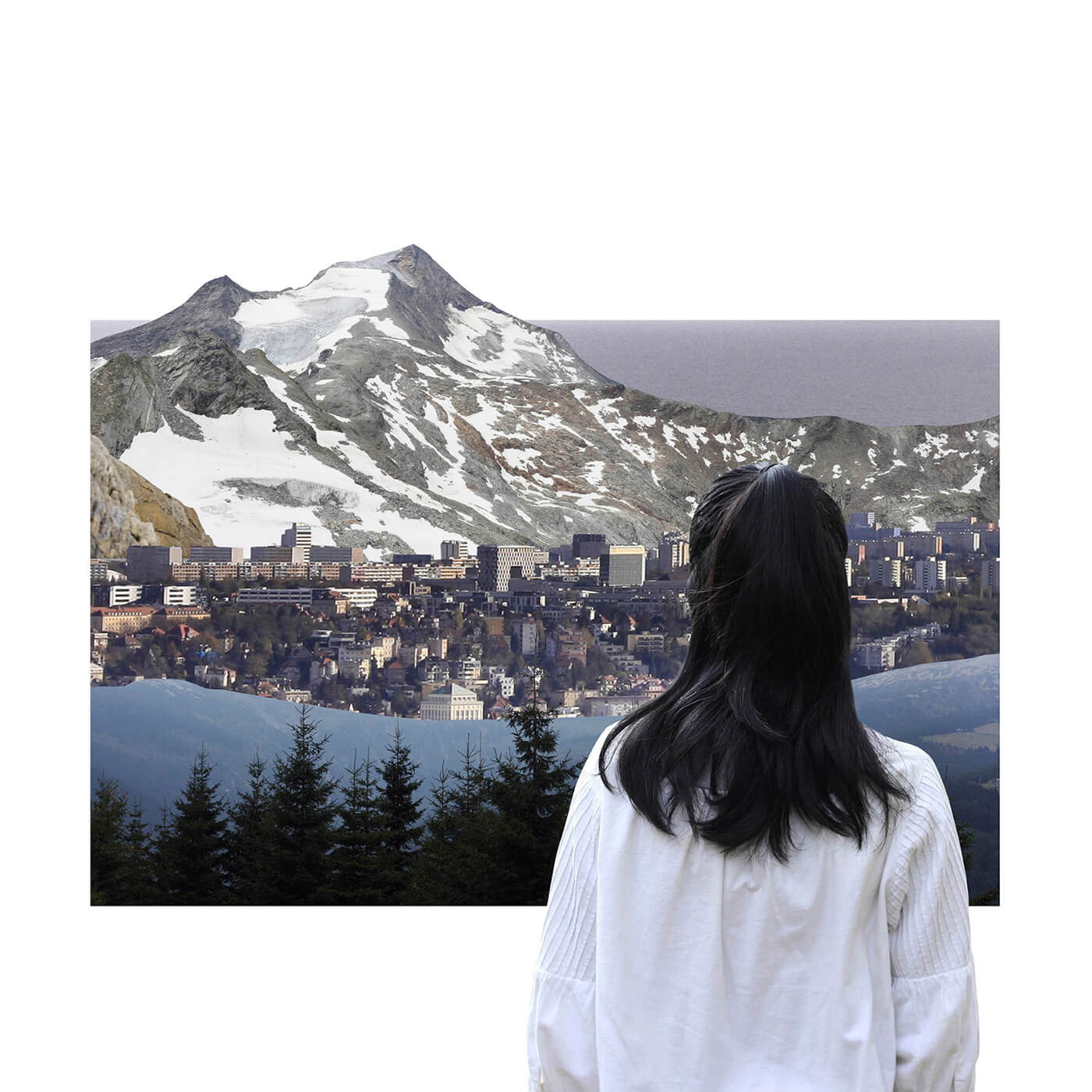
IMAGE COURTESY OF MICHAELA POSPÍŠILOVÁ KRÁLOVÁ
www.michaelapospisilovakralova.cz / @michaelapospisilovakralova
From the series The Universal – “The Universal represents a series of collages created from pictures I took mainly on walks in my hometown Prague. It is a laboratory that explores streets and a city. What makes a city a city? And what makes a street a street? What is the universal essence of a street and what are its main elements? Are the lamps the main street symbol? Houses? Stones, the houses are built from? Or people? People for sure, there would be no life on streets without them. My work has also a metaphorical meaning speaking against prejudices and racism as we can see here every element of the city is built by its various versions. This series also represent my ideal city, not perfect and clean, but with the atmosphere of freedom and creativity.”
Editor’s comment: For some city dwellers visual art – still or moving – is their only access (or regular access) to nature and wilderness. Seeing the natural world as an objective installation is certainly very different to experiencing that environment in reality. This photograph made me question the communication between urban life and rural communities. Are they deeply connected or quite alien like this image seems to depict? Do both parties idealise or demonize the other? The image evokes fascinating questions, in a style of presentation that feels uniquely the photographer’s own.
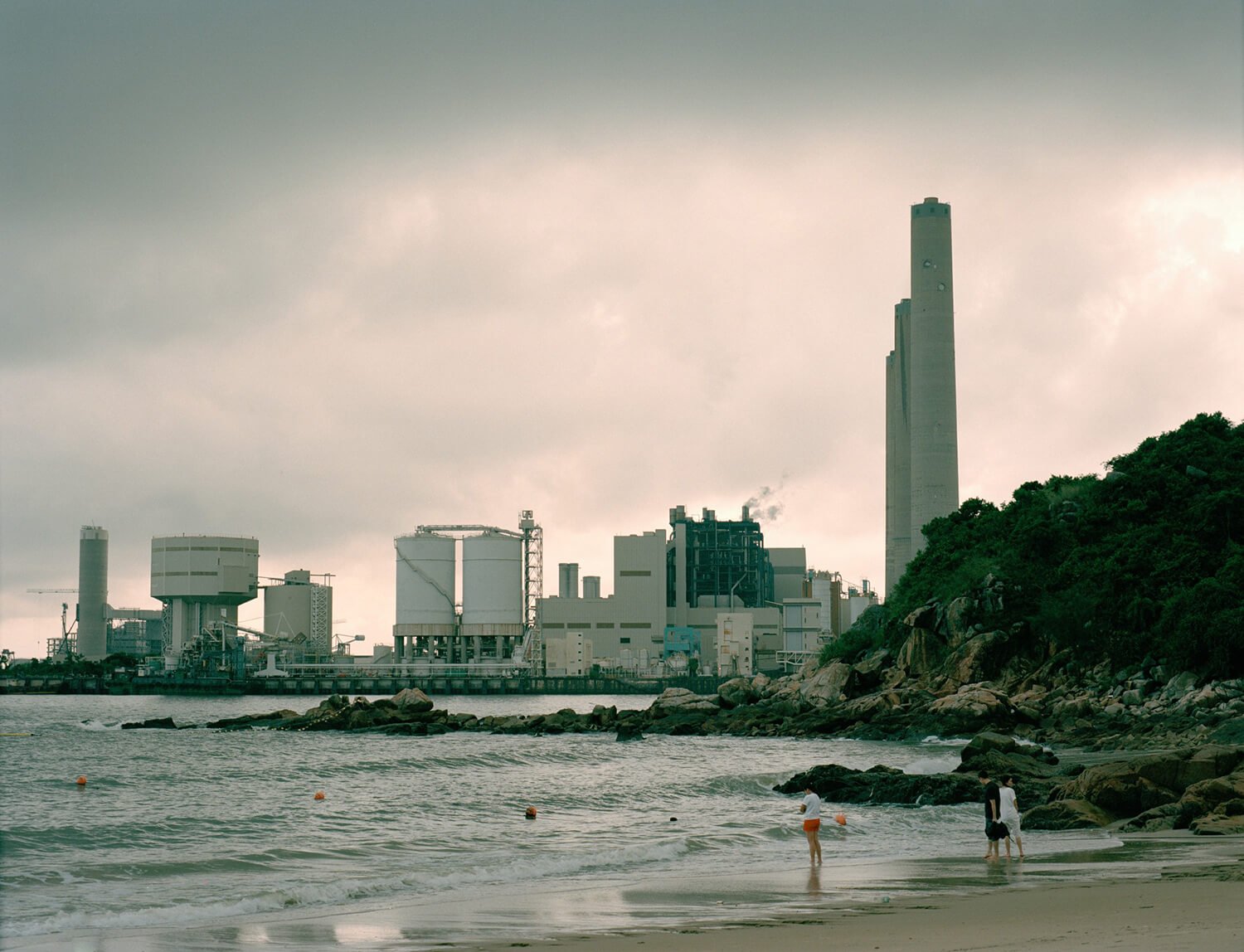
IMAGE COURTESY OF JOSEPH BEECHING
www.josephbeeching.com / @joseph.beeching
From the series To One in Paradise – “To One in Paradise is a portrayal of my family’s relationship to Hong Kong. The work’s focus is on ‘Lamma Island’, a small outlying island with a large expatriate community. Photo albums, postcards, letters and notebooks from post-war and 1990’s Hong Kong sit in conjunction with new imagery, examining constant political and social changes in Hong Kong after 1997.”
Editor’s comment: Island cities are a unique entity – besides the many different ways of making a living operating in close proximity, I always felt the juxtaposition of sea and sand colliding with tower blocks and traffic-jams an uneasy or complicated scene to take in. The photographer is careful to expose this complex reality in this unassuming image, letting the physical entities pictured echo the opposing sociological and political states of the city.
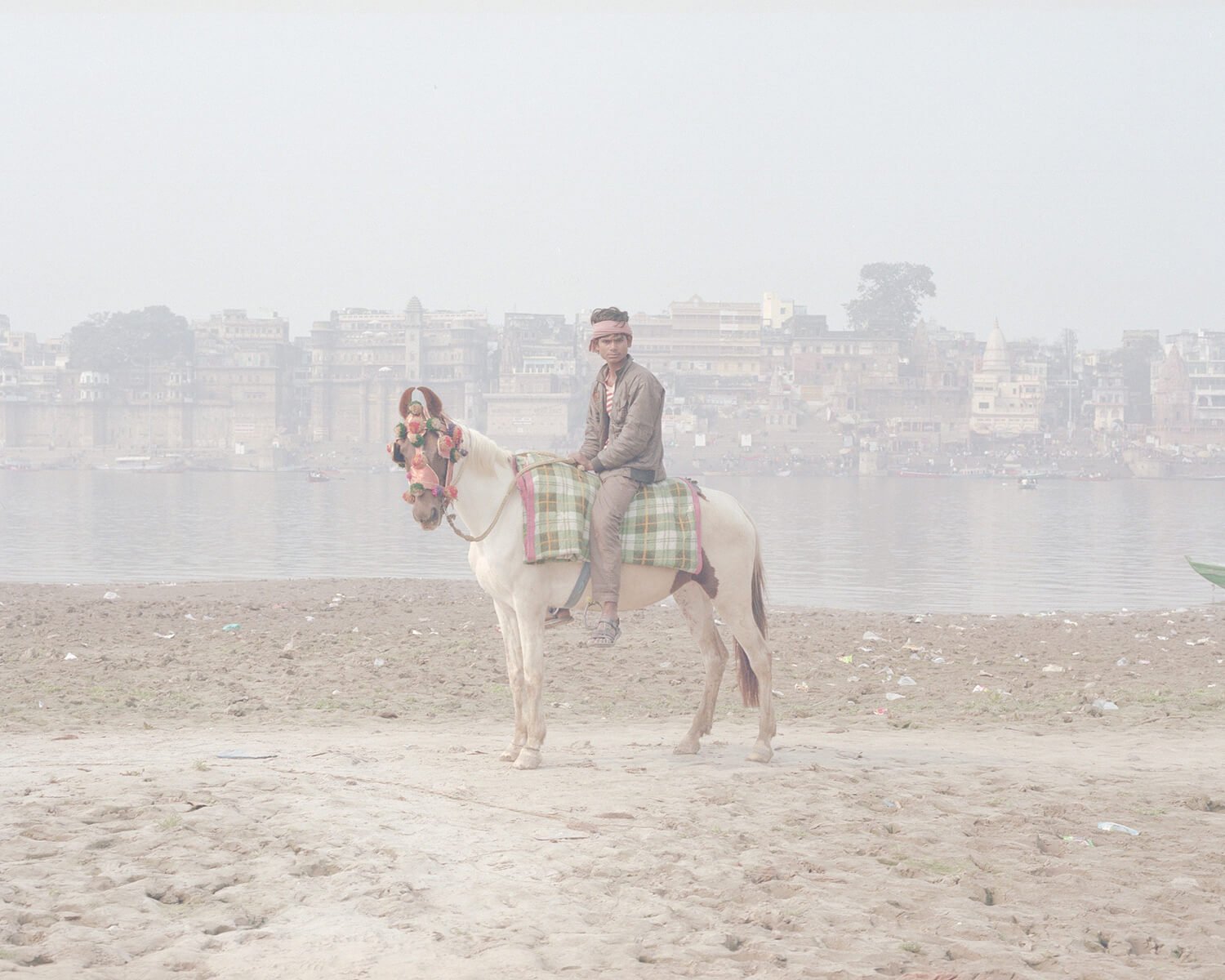
IMAGE COURTESY OF DHILLON SHUKLA
www.dhillonshukla.com / @dhillonshukla
Editor’s comment: At first glance this photograph paints an image of tradition and culture versus urban sprawl. What stories can the people who inhabit the fringes of urbanised areas tell us? They’re not quite in suburbs or out in the rural areas, but just on the outskirts. This is a well composed photograph with a subtle and beautiful colour pallet, that perhaps highlights a ‘forgottenness’ of such people’, but I would love to understand more behind the intention of this image – is it a snapshot or part of a bigger editorial? Watch the cropping on the right-hand side of the frame with the helm of the boat too.
